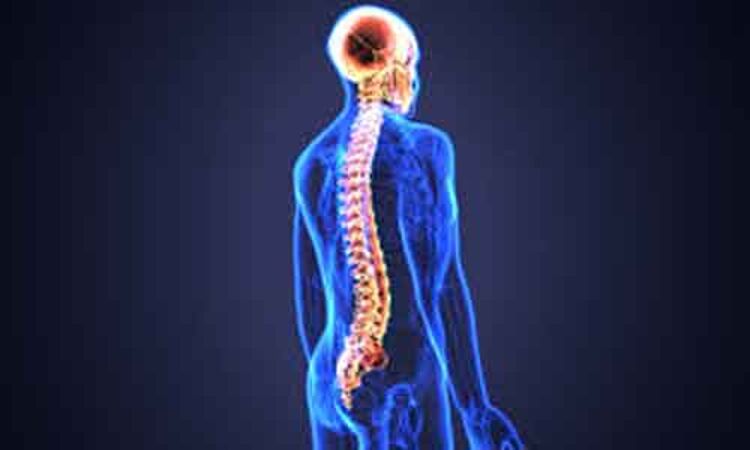- Home
- Medical news & Guidelines
- Anesthesiology
- Cardiology and CTVS
- Critical Care
- Dentistry
- Dermatology
- Diabetes and Endocrinology
- ENT
- Gastroenterology
- Medicine
- Nephrology
- Neurology
- Obstretics-Gynaecology
- Oncology
- Ophthalmology
- Orthopaedics
- Pediatrics-Neonatology
- Psychiatry
- Pulmonology
- Radiology
- Surgery
- Urology
- Laboratory Medicine
- Diet
- Nursing
- Paramedical
- Physiotherapy
- Health news
- Fact Check
- Bone Health Fact Check
- Brain Health Fact Check
- Cancer Related Fact Check
- Child Care Fact Check
- Dental and oral health fact check
- Diabetes and metabolic health fact check
- Diet and Nutrition Fact Check
- Eye and ENT Care Fact Check
- Fitness fact check
- Gut health fact check
- Heart health fact check
- Kidney health fact check
- Medical education fact check
- Men's health fact check
- Respiratory fact check
- Skin and hair care fact check
- Vaccine and Immunization fact check
- Women's health fact check
- AYUSH
- State News
- Andaman and Nicobar Islands
- Andhra Pradesh
- Arunachal Pradesh
- Assam
- Bihar
- Chandigarh
- Chattisgarh
- Dadra and Nagar Haveli
- Daman and Diu
- Delhi
- Goa
- Gujarat
- Haryana
- Himachal Pradesh
- Jammu & Kashmir
- Jharkhand
- Karnataka
- Kerala
- Ladakh
- Lakshadweep
- Madhya Pradesh
- Maharashtra
- Manipur
- Meghalaya
- Mizoram
- Nagaland
- Odisha
- Puducherry
- Punjab
- Rajasthan
- Sikkim
- Tamil Nadu
- Telangana
- Tripura
- Uttar Pradesh
- Uttrakhand
- West Bengal
- Medical Education
- Industry
New injection technique may safely repair spinal cord injury

Researchers at University of California San Diego School of Medicine have found a new method for delivering neural precursor cells (NSCs) to spinal cord injuries in rats, reducing the risk of further injury and boosting the propagation of potentially reparative cells.
The findings are published in the journal Stem Cells Translational Medicine.
NSCs hold great potential for treating a variety of neurodegenerative diseases and injuries to the spinal cord. The stem cells possess the ability to differentiate into multiple types of neural cell, depending upon their environment. As a result, there is great interest and much effort to use these cells to repair spinal cord injuries and effectively restore related functions.
But current spinal cell delivery techniques, said Martin Marsala, MD, a professor in the Department of Anesthesiology at UC San Diego School of Medicine, involve direct needle injection into the spinal parenchyma -- the primary cord of nerve fibers running through the vertebral column. "As such, there is an inherent risk of (further) spinal tissue injury or intraparenchymal bleeding," said Marsala.
The new technique is less invasive, depositing injected cells into the spinal subpial space -- a space between the pial membrane and the superficial layers of the spinal cord.
"This injection technique allows the delivery of high cell numbers from a single injection," said Marsala. "Cells with proliferative properties, such as glial progenitors, then migrate into the spinal parenchyma and populate over time in multiple spinal segments as well as the brain stem. Injected cells acquire the functional properties consistent with surrounding host cells."
Marsala, senior author Joseph Ciacci, MD, a neurosurgeon at UC San Diego Health, and colleagues suggest that subpially-injected cells are likely to accelerate and improve treatment potency in cell-replacement therapies for several spinal neurodegenerative disorders in which a broad repopulation by glial cells, such as oligodendrocytes or astrocytes, is desired.
"This may include spinal traumatic injury, amyotrophic lateral sclerosis and multiple sclerosis," said Ciacci.
The researchers plan to test the cell delivery system in larger preclinical animal models of spinal traumatic injury that more closely mimic human anatomy and size. "The goal is to define the optimal cell dosing and timing of cell delivery after spinal injury, which is associated with the best treatment effect," said Marsala.
Co-authors include Kota Kamizato and Takahiro Tadokoro, UC San Diego and University of Ryukyus, Japan; Michael Navarro and Silvia Marsala, UC San Diego; Stefan Juhas, Jana Juhasova, Hana Studenovska, and Vladimir Proks, Czech Academy of Sciences; Tom Hazel and Karl Johe, Neuralstem, Inc.; and Shawn Driscoll, Thomas Glenn and Samuel Pfaff, Salk Institute.
For more details click on the link: DOI: 10.1002/sctm.19-0156
Hina Zahid Joined Medical Dialogue in 2017 with a passion to work as a Reporter. She coordinates with various national and international journals and association and covers all the stories related to Medical guidelines, Medical Journals, rare medical surgeries as well as all the updates in the medical field. Email: editorial@medicaldialogues.in. Contact no. 011-43720751
Dr Kamal Kant Kohli-MBBS, DTCD- a chest specialist with more than 30 years of practice and a flair for writing clinical articles, Dr Kamal Kant Kohli joined Medical Dialogues as a Chief Editor of Medical News. Besides writing articles, as an editor, he proofreads and verifies all the medical content published on Medical Dialogues including those coming from journals, studies,medical conferences,guidelines etc. Email: drkohli@medicaldialogues.in. Contact no. 011-43720751


